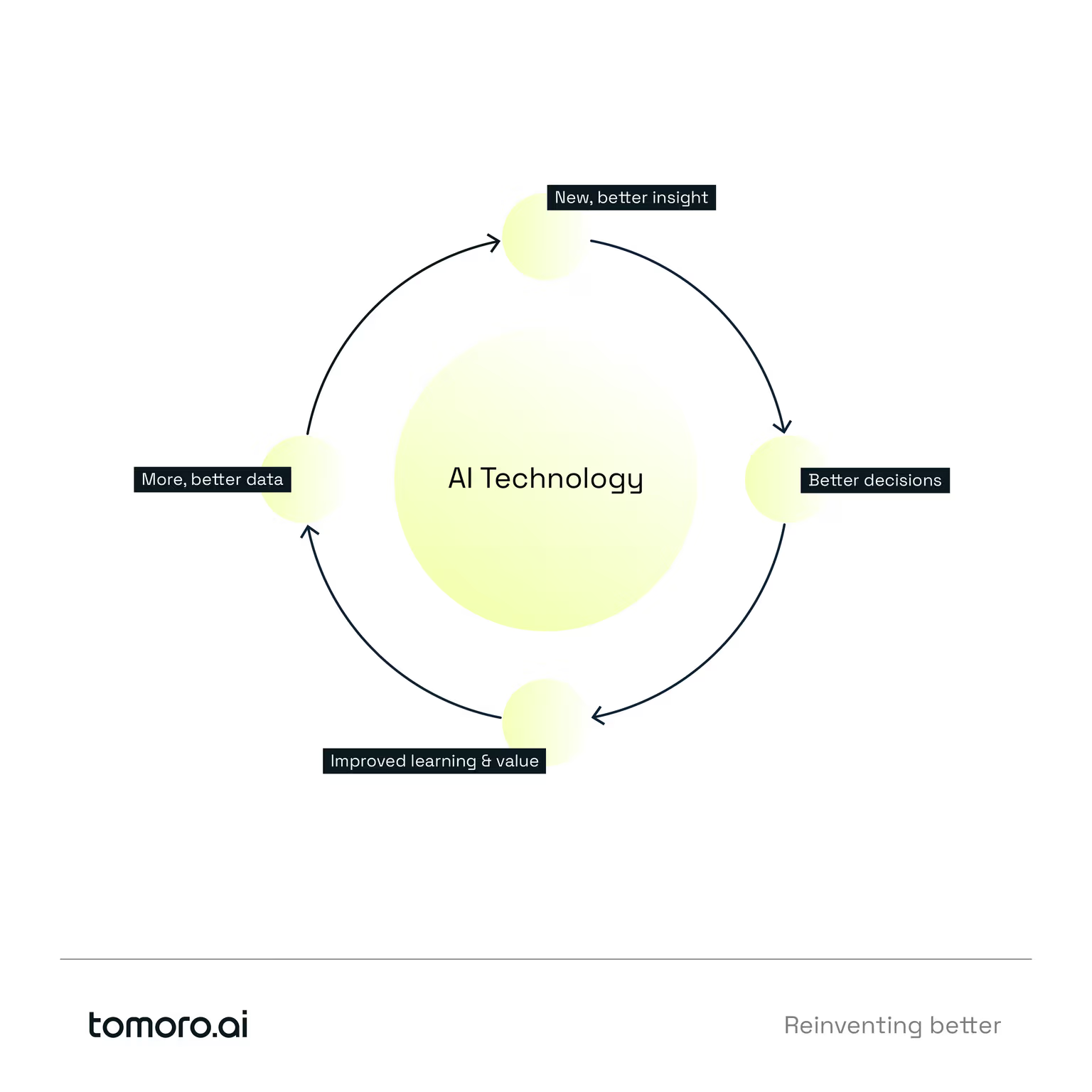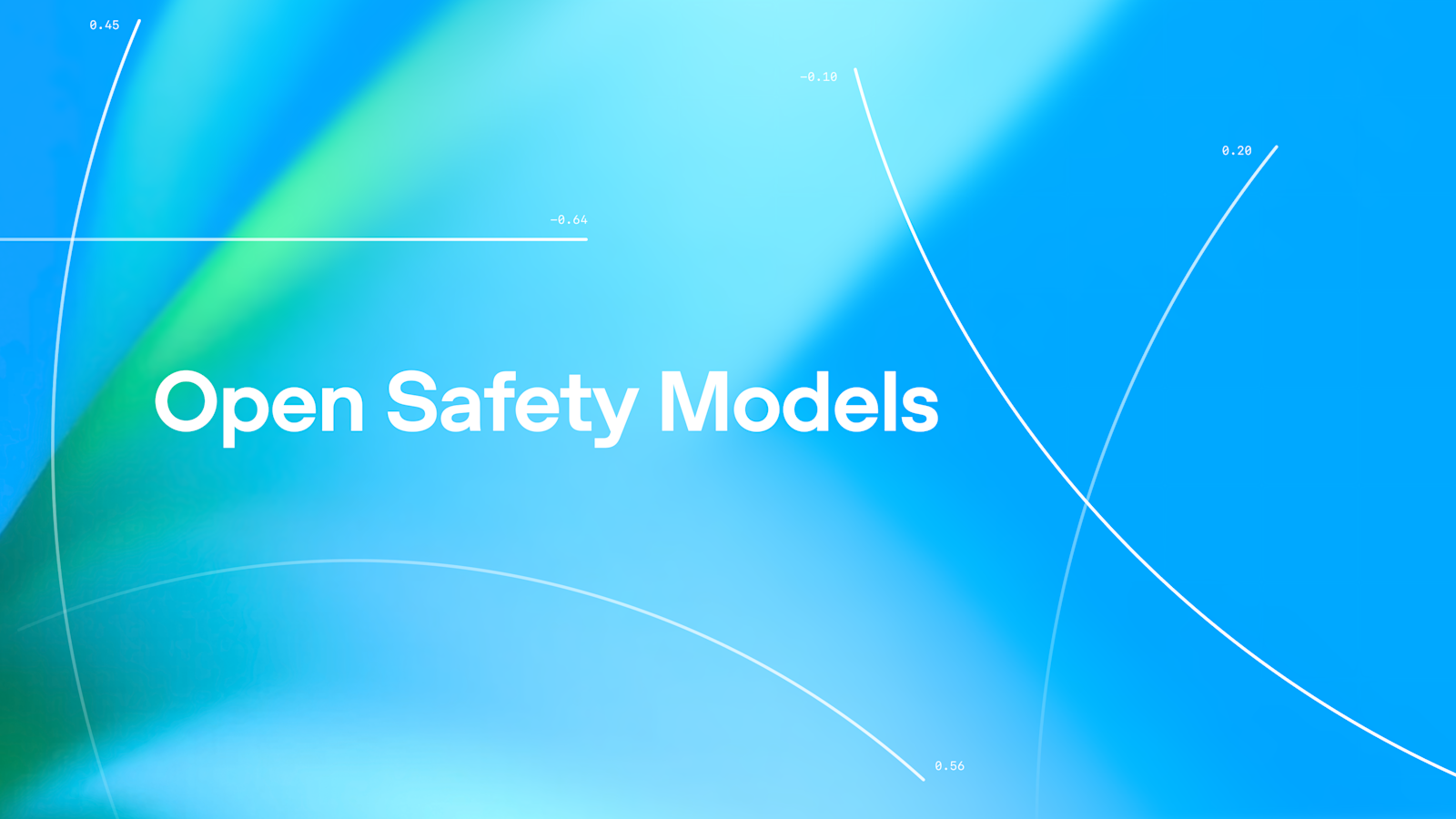Introduction
At Tomoro we live and breathe AI every day, and we know that that with the world moving so fast, every business is trying to work out the right time, and right way, to start with AI technology.
AI is the greatest tool (not a silver bullet) at your disposal to build competitive advantage for your business in the next 1-3 years.
However, most businesses are stuck on how, where and when to start.
One of the big concerns we hear is but will I end up spending money building / buying / acquiring something that I throw away later when a better version comes along?
This blog lays out why this approaches the problem from the wrong end.
We’ll cover:
- Why business value derived from AI will be exponential, not linear
- Why organisational AI literacy is the most important skill to prioritise
- Why waiting for technology to ‘settle’ will never happen, we live in the world of 6-monthly technology revolutions now
And at the end, I’ll summarise why these factors mean that it’s less about finding the perfect project or technology, and more about rolling up your organisational sleeves now and experimenting, measuring and learning with the technology that will revolutionise the world.
AI is an exponential value-return technology

The AI business technology revolution shares a lot in common with the previous digital business technology revolution. They both are tech- driven new capabilities that have, or will, fundamentally transform(ed) every aspect of how businesses operate.
One of the most crucial differences though is the nature of the compounding value effect.
Digital technology doesn’t get any better the more you use it. AI technology does.
For example, if you were the 200th customer to introduce a digital CRM, you got the benefit of all the other people using it before you and get new features added to the product. Sure, it would take your organisation some time to learn how to use it effectively, but you had the same core product as your competitors who’d had it for the last two years.
With AI (and the right implementation) this is fundamentally different. The day you start using your data to interact with AI technology (e.g. a large language model like GPT-4). You create a system that enables: better data → better insight → better decisions → more value → better data...

Therefore even if you turn that specific solution off in future you have captured a significant amount of new value. Namely new data which, when you apply it to your next model or AI product, will drive increased relevance and gains from Day 1, also accelerating how fast that solution builds value before it’s inevitable replacement with the next one...
The good news: this means that starting, even if you end up with a different set of technology choices in the end, starts the exponential growth feedback loop which will drive long term competitive advantage.
The bad news: it’s the same for your competition.
Prioritising organisational AI literacy
You can adopt AI meaningfully in many ways (build your own, acquire a company, pay for SaaS, use APIs in your own tools, etc.)
All of these can yield valuable solutions for your business, if you have the organisational skills in place to define, experiment and take these solutions to live.
These skills are what we call AI Literacy:
- Everyone in the business needs a level-set understanding of what's possible, and keep this up to date. If your business is looking at GPT3.5 today, you are 12 months behind. If your innovation team has no large language model use cases in their backlog, you are 18 months behind. Building understanding what is possible at a ‘normal colleague' level is a critical skill to generate the right use cases and mass-scale reinvention of core business process.
- Leaders need to know their business better than ever before because the tools available to take advantage of this insight are now 10x more powerful than they were 12 months ago. It means truly understanding the levers at your disposal to build competitive advantage for the business.
- Everyone in the business needs to play, trial, experiment, measure, and learn more efficiently than ever before, this includes setting up safe AI sandboxes for testing, providing AI education to all colleagues, up-skilling all roles (not just technologists), running AI hackathons, updating your procurement process, and nurturing a safe, fail-fast, mindset.
A world of 6-monthly business technology revolutions
Since the dawn of technology what is possible has tended to be greater than what organisations can adopt quickly. To date, we’ve been relatively safe from this as technology progress has been measured in decades and therefore given us plenty of time to catch up with new organisational structures, cultures and workflows.
This is no longer the case. Technology advances now reinforce technology advances at the rate of 6-monthly cycles and accelerating.

This means that the ‘agile’ strategy lots of businesses have adopted in recent years (but still with yearly strategy updates and quarterly decisions stage-gates) needs to shift fully to become a ‘living strategy’. Every business will have to adopt technology-native mindset to continuous improvement which links market feedback, feature backlogs and build, train and deploy protocols.
In our experience, the best way to build business which is resilient and response to constant change is by creating those conditions in pockets of the organisation, whilst developing highly valuable solutions, and rapidly spreading the culture from early adopters.
How to take control of your AI future
This can sound overwhelming. But it doesn’t have to be.
You need to start
You can’t get it wrong as long as you start; then learn and enrich your own, unique data. Building a meaningful solution, complementary to your existing technology estate, must be a critical priority in 2024.
You need a living AI business strategy
Not because it’ll necessarily be right first time, but because it will force your business to address key questions on how you provide organisation-wide access to using AI tools safely, securely and with a route to scaled value. A good AI business strategy has AI embedded within it to continuously monitor new market and technology events to help you react as the cycle of innovation increases.
Focus on building experience, not choosing technology
The thing that will take the longest time is building organisation knowledge and cultural resilience to the most disruptive technology ever created. Getting your people hands-on with this technology in sandbox environments which encourage safe innovation is critical. And 'even better' means having a strategic way of pulling the successes out of the sandbox and into scaled deployment over time.


